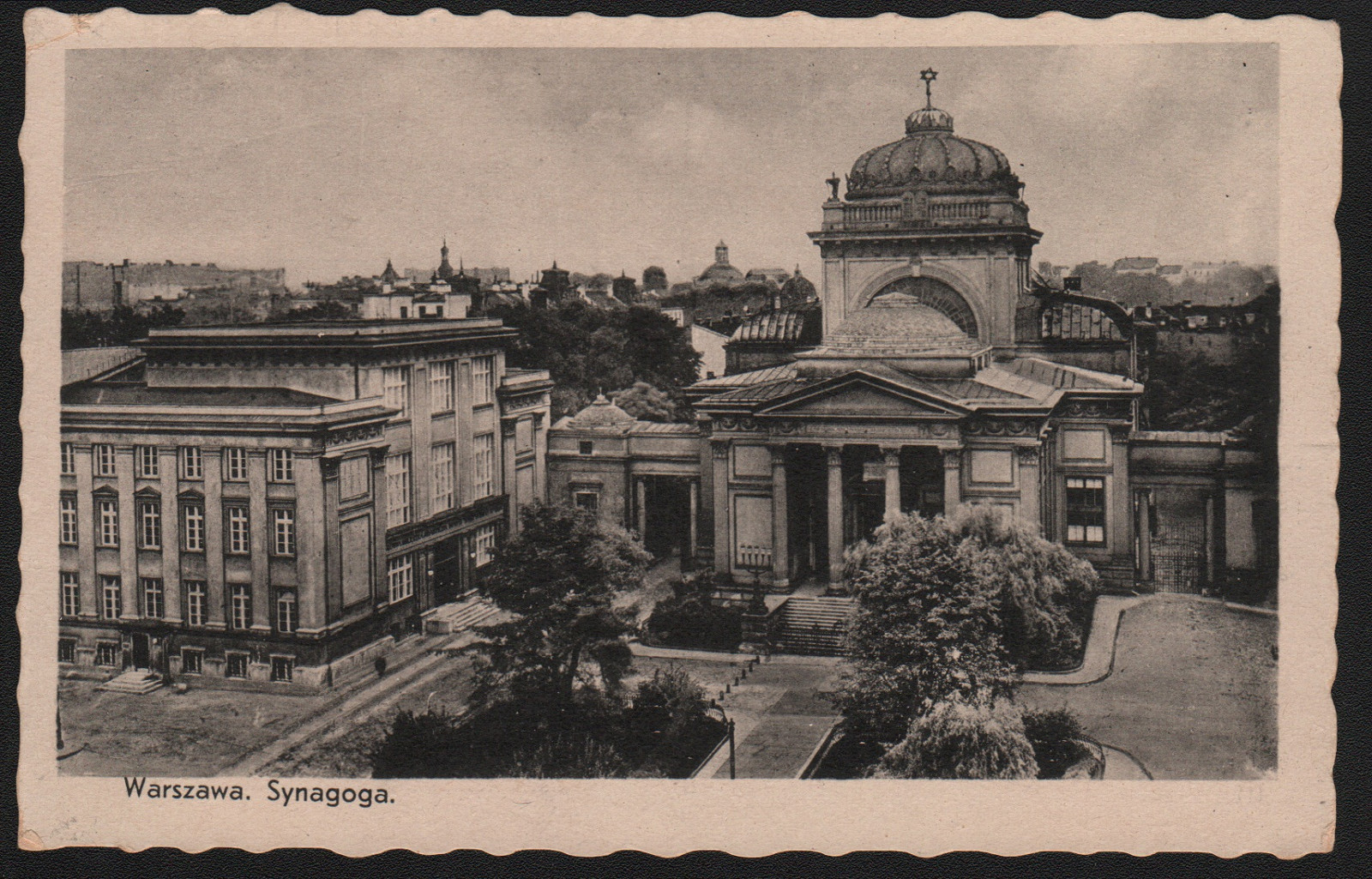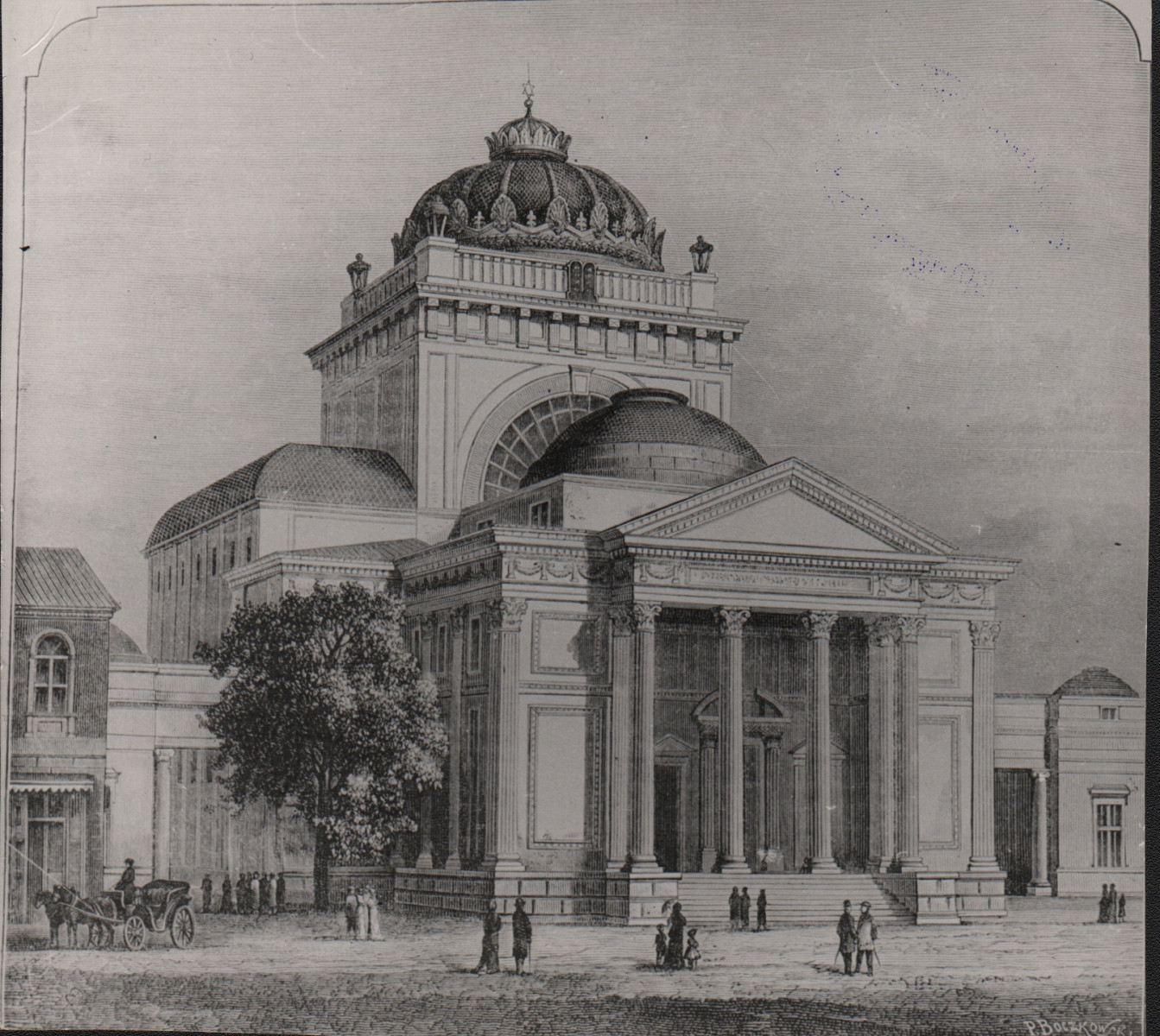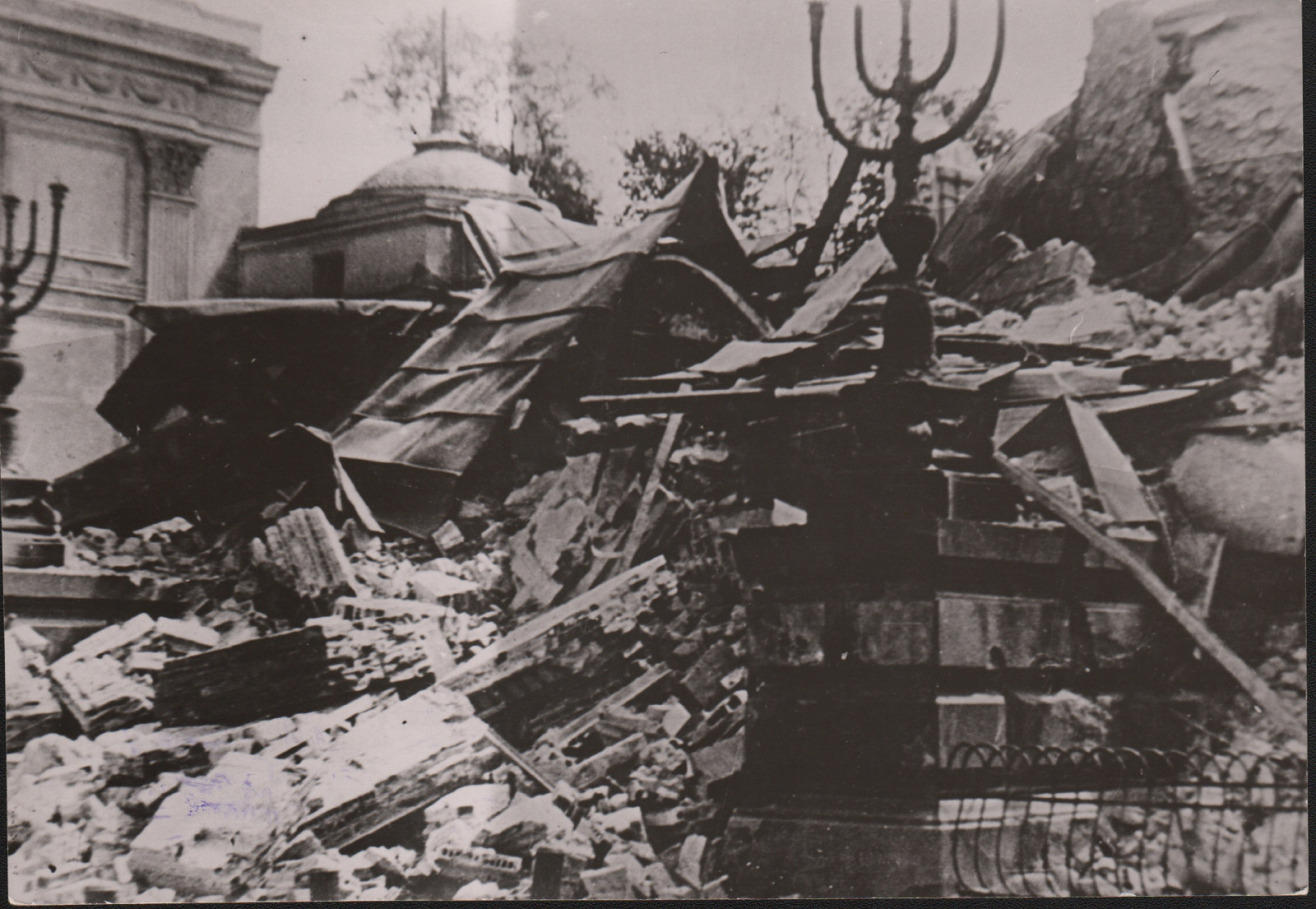- News
- Events
- Oneg Shabbat
- Collections
- Research
- Exhibitions
- Education
- Publishing Department
- Genealogy
- About the Institute
- Bookstore

Designed by, at the time, the best and most expensive architect in Warsaw, Leandro Marconi and awakening fear in some followers of Judaism, it lasted only 65 years and now the Blue Tower takes its place.
The idea to build the Great Synagogue in Tłomackie Street emerged around 1859 and was put into action by the Committee of the Synagogue in Daniłłowiczowska Street. The new building was supposed to replace the old one. In 1870 a Committee of Building the Synagogue was established. The members included the most wealthy, assimilated and emancipated part of the Jewish community in Warsaw. They were also supporters of the modest reform of Judaism, which contrasted with predominant in the Kingdom of Poland Hasidism.

Architect Marconi — the most expensive and the best
On 5th May, 1872 a square at Tłomackie Street was purchased and on 11th July a contest for the design of the synagogue was announced. The contest was preceded with discussion in press about the style and decoration of the house of prayer. Even though it was Stanisław Adamczewski whose project actually won, the design and its execution was given to Leandro Marconi, who was at the time the best and the most expensive architect in Warsaw. On 14th May, 1876 took place the rite of lying a cornerstone and on 26th September, 1878 the synagogue was finally opened and sanctified.
The followers of Judaism in Warsaw were afraid of the synagogue in Tłomackie
The synagogue had a nave and two aisles, which were separated by two-storied arcades. An innovative cast iron construction was used as well as modern installations such as central heating and gas-lighting. The interior of the synagogue had been decorated with elegant materials. Between the vault of the apse and the arcades of the choir an invocation was placed: Szma Israel... [Hear, O Israel : the Lord is our God, the Lord is one]. The fact that in the extract the Name of God appears twice was the reason why the Jews in Warsaw would not go to the synagogue. “They were even afraid of the synagogue at Tłumackie. It stood on a hill (...), had a choir, organs, a cantor, a preacher who dared to call out to the Lord in Polish,” wrote Bernard Singer in his memoirs ‘Moje Nalewki’ about the reaction to the innovations in the synagogue.
65 years of the existence of the Great Synagogue
During the only sixty-five years of the synagogue existence, the entire surrounding of Tłomackie square had changed. In 1928–1936 the edifice of the Judaist Library was built (which since 1947 has been the seat of Jewish Historical Institute). The synagogue building was renovated in the 1920s. The roof was fixed, the entrance steps were replaced and the side facade was freshened up.


16th May, 1943 — the last breath
The synagogue was devastated by the Germans already at the beginning of the occupation. Its edifice and square became a storage for the furniture plundered from the ghetto. The synagogue was blown up on 16th May, 1943 by general Jurgen Stroop, which became a symbol of the suppression of the uprising as well as the end of the ghetto and “Final Solution” in Warsaw. In the 50’s a new plan of Bank Square was designed. It was decided not to rebuild the synagogue and now the Blue Tower (Błękitny Wieżowiec) takes its place.